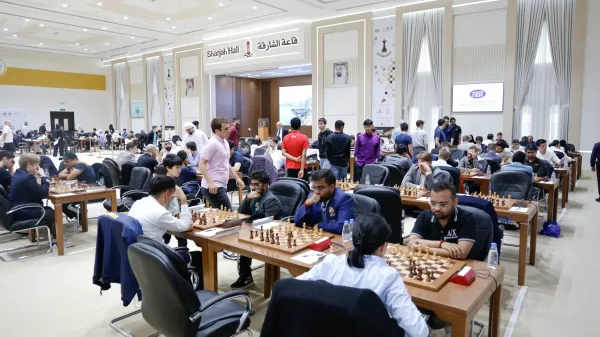Justice Bhushan Ramkrishna Gavai was sworn in as the 52nd Chief Justice of India (CJI) on Wednesday by President Droupadi Murmu. His appointment is not just a ceremonial transition—it’s a milestone.
He became the first Buddhist and only the second judge from the Scheduled Castes to ever lead the Indian judiciary. Justice Gavai, the most senior judge in the Supreme Court, took over from Chief Justice Sanjiv Khanna. His tenure will last until November 23, 2025.
The oath was administered by President Droupadi Murmu in the presence of PM Modi, following his formal appointment under Article 124(2) of the Constitution. The Ministry of Law and Justice has already issued the official notification.
For India’s legal system, his elevation is a powerful statement about inclusivity and breaking long-standing barriers.
Humble beginnings to the apex court
Born on November 24, 1960, in the Frezarpura area of Amravati, Maharashtra, Justice Gavai grew up in modest surroundings.
His early life was shaped by his father RS Gavai—a veteran Ambedkarite politician who went on to become the Governor of Bihar, Sikkim, and Kerala—and his mother, a schoolteacher who instilled in him the value of hard work.
He studied in a local municipal school, often sitting on the floor in classrooms lacking basic amenities.
These formative experiences—rooted in diversity, adversity, and resilience—profoundly shaped his sense of justice and equity.
Choosing law over politics
Though initially drawn to politics, Justice Gavai ultimately chose law as his path.
After earning degrees in commerce and law from Amravati University, he joined the legal profession in 1985. He worked his way up—starting as an independent lawyer, later serving as government pleader and public prosecutor at the Nagpur Bench of the Bombay High Court.
His legal acumen and leadership were evident early on—he accepted the position of government pleader on the condition that he could select his own team, two of whom would later become High Court judges.
A judicial journey of substance
Justice Gavai was elevated to the Bombay High Court as an Additional Judge in 2003 and became a permanent judge in 2005.
Over the years, he presided over cases at the court’s principal seat in Mumbai and at its Nagpur, Aurangabad, and Panaji benches.
He was appointed to the Supreme Court on May 24, 2019. Since then, he has been part of nearly 700 benches and has delivered around 300 judgments covering areas such as constitutional law, criminal justice, commercial litigation, and environmental governance.
Justice Gavai has contributed to several key Supreme Court rulings. He was part of the Constitution Benches that:
Justice Gavai’s legal philosophy is rooted in both his life experience and a deep reading of the Constitution.
In a landmark 2024 ruling, he delivered a powerful separate opinion supporting sub-classification within the Scheduled Caste quota. Drawing from his own journey, he argued that not all beneficiaries of reservation start from the same point—and that equity must evolve to remain meaningful.
He became the first Buddhist and only the second judge from the Scheduled Castes to ever lead the Indian judiciary. Justice Gavai, the most senior judge in the Supreme Court, took over from Chief Justice Sanjiv Khanna. His tenure will last until November 23, 2025.
The oath was administered by President Droupadi Murmu in the presence of PM Modi, following his formal appointment under Article 124(2) of the Constitution. The Ministry of Law and Justice has already issued the official notification.
For India’s legal system, his elevation is a powerful statement about inclusivity and breaking long-standing barriers.
Humble beginnings to the apex court
Born on November 24, 1960, in the Frezarpura area of Amravati, Maharashtra, Justice Gavai grew up in modest surroundings. His early life was shaped by his father RS Gavai—a veteran Ambedkarite politician who went on to become the Governor of Bihar, Sikkim, and Kerala—and his mother, a schoolteacher who instilled in him the value of hard work.
He studied in a local municipal school, often sitting on the floor in classrooms lacking basic amenities.
These formative experiences—rooted in diversity, adversity, and resilience—profoundly shaped his sense of justice and equity.
Choosing law over politics
Though initially drawn to politics, Justice Gavai ultimately chose law as his path. After earning degrees in commerce and law from Amravati University, he joined the legal profession in 1985. He worked his way up—starting as an independent lawyer, later serving as government pleader and public prosecutor at the Nagpur Bench of the Bombay High Court.
His legal acumen and leadership were evident early on—he accepted the position of government pleader on the condition that he could select his own team, two of whom would later become High Court judges.
A judicial journey of substance
Justice Gavai was elevated to the Bombay High Court as an Additional Judge in 2003 and became a permanent judge in 2005. Over the years, he presided over cases at the court’s principal seat in Mumbai and at its Nagpur, Aurangabad, and Panaji benches.
He was appointed to the Supreme Court on May 24, 2019. Since then, he has been part of nearly 700 benches and has delivered around 300 judgments covering areas such as constitutional law, criminal justice, commercial litigation, and environmental governance.
Notable rulings and legal impact
Justice Gavai has contributed to several key Supreme Court rulings. He was part of the Constitution Benches that:
- Upheld the abrogation of Article 370,
- Struck down the electoral bonds scheme, and
- Validated the 2016 demonetisation move.
- Granting bail to AAP leader Manish Sisodia in a money laundering case,
- Staying Rahul Gandhi’s conviction in the Modi surname defamation case,
- Granting bail to activist Teesta Setalvad in a 2002 Gujarat riots-related case.
Justice Gavai’s legal philosophy is rooted in both his life experience and a deep reading of the Constitution.
In a landmark 2024 ruling, he delivered a powerful separate opinion supporting sub-classification within the Scheduled Caste quota. Drawing from his own journey, he argued that not all beneficiaries of reservation start from the same point—and that equity must evolve to remain meaningful.





